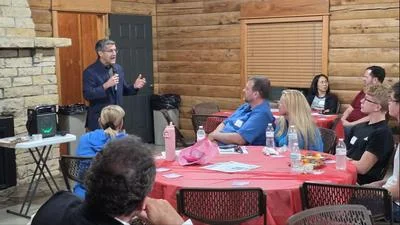City of Bloomington issued the following announcement on Nov. 13.
A train horn quiet zone at three public railroad crossings will begin on Tuesday, November 20. The crossings are part of the Union Pacific Railroad/Amtrak line, which runs north and south through Bloomington and Normal. The three public railroad crossings are at Washington Street, Miller Street, and Six Points Road. In a quiet zone, train operators for all train types do not routinely use a train horn at each crossing. However, operators must use a train horn if a vehicle or pedestrian is present on the tracks, if a pedestrian is near the train crossing, if there is construction on the tracks, or if any other type of emergency situation occurs.
The Illinois High-Speed Rail project paid for safety improvements at the three Union Pacific Railroad crossings so that high-speed Amtrak trains can use them. These safety improvements also made it possible for the City to establish a quiet zone. Since Amtrak does not use the Norfolk Southern Railroad, which runs east and west through Bloomington, the Illinois High-Speed Rail Project did not pay for the necessary safety improvements to establish a quiet zone along the corridor. City staff estimates that, on average, safety upgrades would be over $400,000 per crossing, which is why the City is not pursuing a quiet zone for Norfolk Southern Railroad crossings at this time.
In July, city staff began the required stakeholder input period, which included a meeting with representatives from McLean County, the United States Department of Transportation, Illinois Department of Transportation, Federal Railroad Administration, Illinois Commerce Commission, and Union Pacific Railroad in August. Once the City met all federal requirements, city staff sent a notice to all stakeholders that the train horn quiet zone would begin November 20. City crews will install the necessary signage when the quiet zone takes effect.
Members of the public can find more details on the City of Bloomington Quiet Zone by visiting: www.cityblm.org/quietzone.
Original source can be found here.






 Alerts Sign-up
Alerts Sign-up